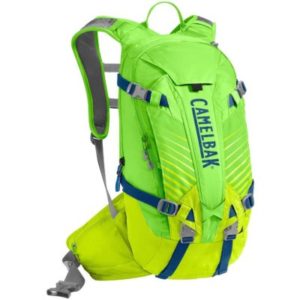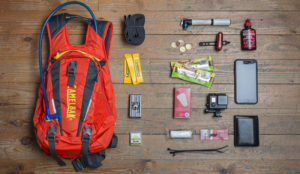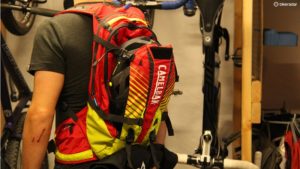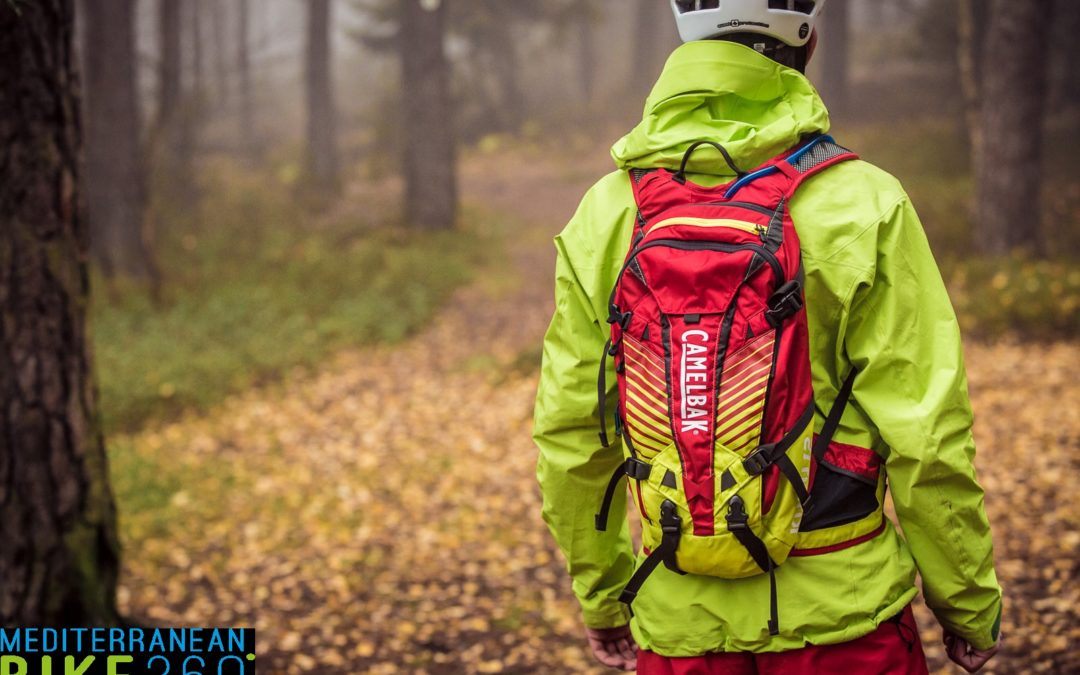The first thing we need to think of is the type of rucksack we need. This depends on the length of the route, long or short, and if it has a water bag. Personally as I prefer longer routes I like a larger rucksack, in which I can take everything and be prepared for every eventuality.

Once you have chosen the mtb rucksack that best suits your needs, the next question is what should I carry in it? Well now I will tell you what essentials you need to carry in your MTB rucksack or what I usually carry in mine.
The first thing I think about is the length of the route. Will it be a two hour ride or am I going to spend the whole day in the mountains? Will it be flat or uphill? Less weight is better but there are few essential items that you definitely need to take.
It is also important to consider if you are going to do the activity alone or in a group, because if it’s the latter, some you can split the things you need to take between different rucksacks to divide the weight and have less to carry.
It is also very important to have the bike ready and well oiled; it will help us to avoid having to repair it on the route. Remember that you should be able to fix your own bike in these circumstances, and not have to call anyone to come and rescue you.

For shorter routes
For shorter routes of 2 or 4 hours I carry the minimum weight in the rucksack, and in this case, I would choose a smaller rucksack. Inside I would carry…
- Documentation and money
- Food and water: I usually carry plenty of water, it will depend on the quantity you normally drink and will also depend on the time of year. Then also
I usually carry a banana that, being rich in potassium as it helps you avoid cramps and also some dates. I always recommend eating something every 40 minutes and drinking every 20 minutes, even when you aren’t thirsty, to avoid dehydration and light headedness
- Puncture repair kit (innertube or two if the correct measurement and an air pump)
- Basic first aid kit with the essentials for a fall (iodine, gauze, bandages, tweezers, saline, and disposable stitches).
- Mobile charged for use in emergencies. I would not use it as a GPS or with other apps to save the battery.
- Whistle (hanging from one of the straps), especially if I go alone, to call for attention if you have a fall and are unable to get up.
- Spare links to repair a broken chain as they weigh a little and can get you out of a fix. For each chain depending on the gears use a different link size.
- Multitools, mine even has a little saw and screwdriver.
- Some plastic cable ties.
- A little toilet paper or tissues in case of emergencies …
Do not forget that you will leave with warm clothes on, but after a while and in the central hours of the day, you will probably remove some items and put them in the rucksack too.

Longer routes
If I’m going to be the whole day on the road and to in the mountains, the weight of the rucksack will increase, remember that if we go in a group, we can divide the weight. So, what I’ve mentioned above, I add:
- More food and more water: a snack, and some gel in case you need a boost, remember that the gel must be taken before you start to feel dizzy, or it won’t be any use.
- A front and rear light, in case it gets dark.
- Spare batteries for the GPS.
- Charger for mobile.
- If our multipurpose does not have a knife, add one.
- A thermal blanket.
- A rope or elastic in case I have to pull someone.
In short, these are all the items that I carry in my backpack when I go out
with the MTB. As I said before, you have to take the minimum and essential items
in case of any accident or something unexpected happens to us.



Why cable ties?
Hi kelly.
They can be used to hold something that has broken.